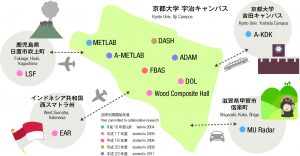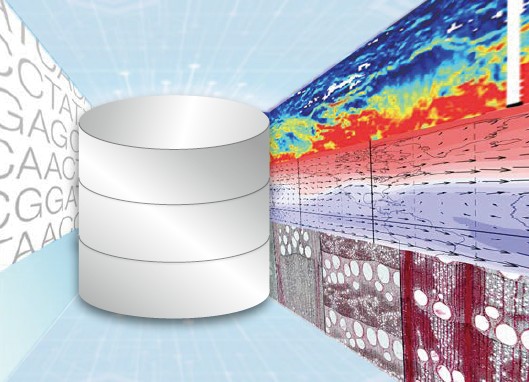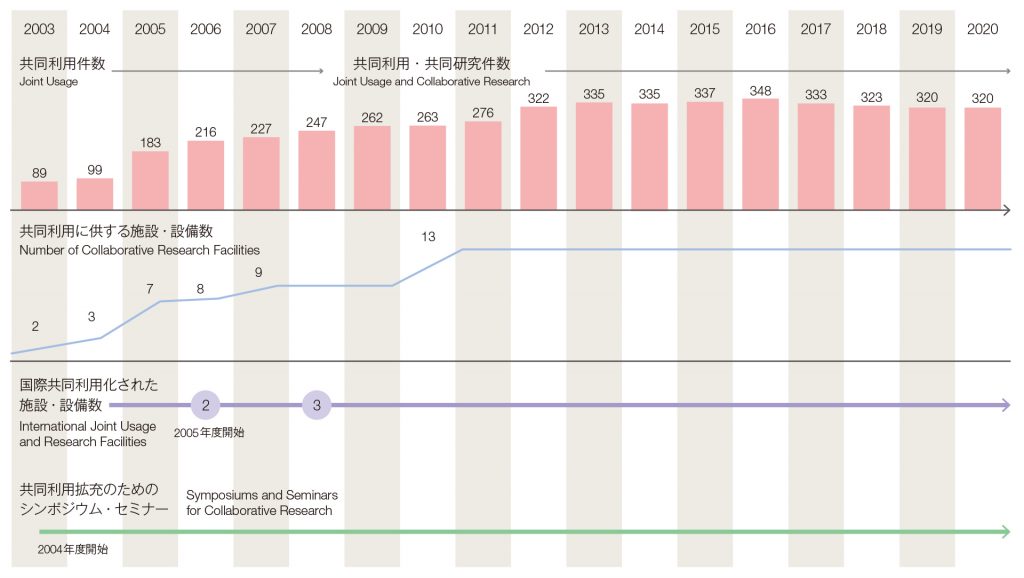Department of Collaborative Research Programs
Updated: 2021/04/05
Domestic and international inter-university collaborative programs form the heart of RISH. This department maintains collaborative equipment and facilities and provides a variety of databases on the humanosphere.
Cooperative Studies Using Collaborative Research Facilities
In total, 13 facilities serve collaborative research. The Middle and Upper Atmosphere (MU) radar at Shigaraki MU Observatory, the Advanced Kyoto-daigaku Denpa-kagaku Keisanki-jikken (A-KDK) computer, the Microwave Energy Transmission Laboratory (METLAB), and Solar Power Station/Satellite Laboratory (SPSLAB) have existed since 2004 and prior. In 2005, the Equatorial Atmosphere Radar (EAR) in Indonesia, Wood Composite Hall, the Living-sphere Simulation Field (LSF) in Kagoshima, and the Deterioration Organisms Laboratory (DOL) were founded. In 2006, the Usage of Forest-Biomass Evaluation and Analysis System commenced. In 2008, the Development & Assessment of Sustainable Humanosphere (DASH) System was introduced. In 2011, the Analysis and Development System for Advanced Materials (ADAM), the Advanced Microwave Energy Transmission Laboratory (A-METLAB), and the Performance Evaluation System of Space Electromagnetic Environments (PEMSEE) Instruments were put in service.

Collaborative Research Using Databases
Various information, such as a xylarium of wood specimens collected since 1944, atmospheric observation data using the MU radar and other instruments, and space-plasma data observed with GEOTAIL satellite, are now combined into the Database of the Humanosphere and are available for public use. Proposals for scientific and technological use are always welcome.
Expansion of Domestic and International Collaborative Research
International cooperative research using the MU radar and the EAR(Equatorial Atmosphere Radar) started in 2005. Research using theDOL/LSF started in 2008. After that, RISH was approved by the Ministry of Education, Culture, Sports, Science and Technology(MEXT) as the Joint Usage/Research Center for Humanosphere Science in Japan, and has since been continuing to develop joint research in Humanosphere Science in collaboration with a wide range of communities.
Collaborative research in 2004 consisted of 99 projects based in three facilities. Our collaborative research is expanding, with 13 facilities opened for collaborative research since 2011 and projects exceeding 200 in total and over 1,000 participants to date.




